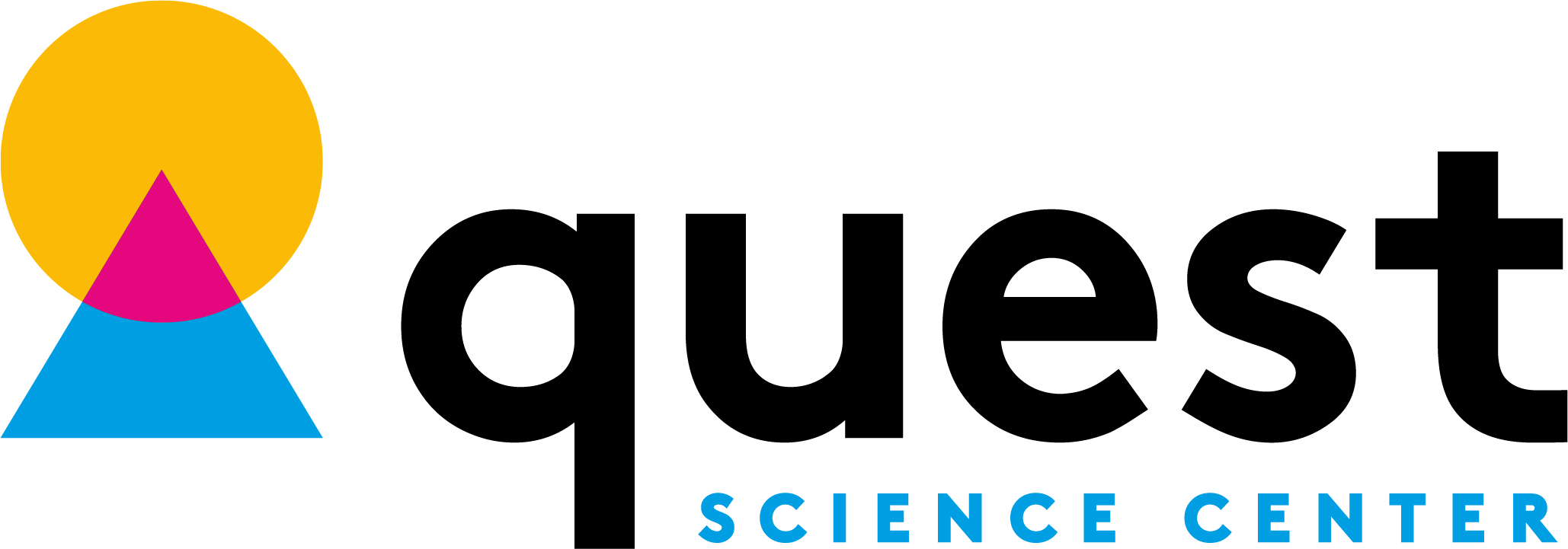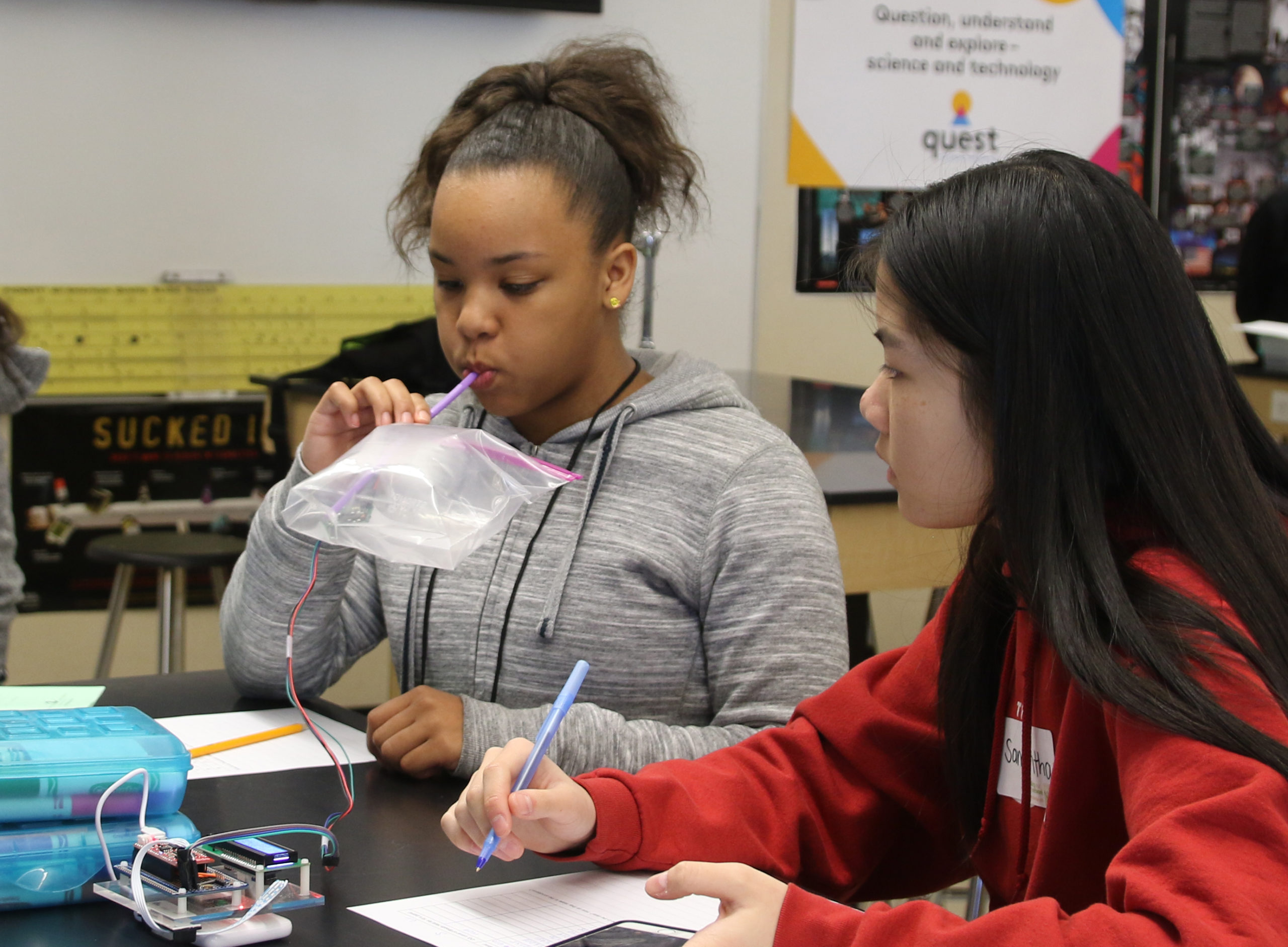During the Expanding Young Horizons conference on February 22 at Dublin High, Quest unveiled a new learning module: measuring carbon and exploring its relationship to atmospheric science, photosynthesis, respiration, combustion and fermentation.
Quest teamed up with a group of students to present lessons in climate change at the daylong conference, which inspires middle- and high-school-age girls to pursue careers in science and technology.
“I found this activity very eye-opening… By attending this workshop, I was inspired to try and do my part.”
—Nikhila Juluri, Dublin High School
During the workshop, five teams – each with a carbon dioxide (CO2) sensing device – were set up with instructions for conducting a CO2 experiment. Each team came up with a prediction and took CO2 readings at various time intervals, graphed the data, and presented their findings to the group.
In one experiment, participants were asked to breathe into a bag to assess human respiration. Another team compared respiration between a hamster and a mouse to determine which gives off more CO2. By exploring whether plants in the light or in the dark give off more CO2, students learned about photosynthesis and plant respiration. Students also burned candles inside small, medium, and large jars to learn about CO2 generation during combustion. Another experiment used bananas and grapes with a yeast solution to measure the CO2 created during fermentation.

A sensor designed by Quest to measure CO2
A volunteer group of middle schoolers, high schoolers, and adults came together to build the sensors used at the workshop, most without previous experience with electronics or soldering. Specially designed by Quest scientists, these sensors to measure CO2 are reasonably low cost and can easily be assembled.
Special thanks to the five student volunteers (6th through 9th grade), who helped at each station during the workshop: Nikhila Juluri, Ameya Gopinath, Samantha Lu, Grace Sewell, and Lucas Sewell.

